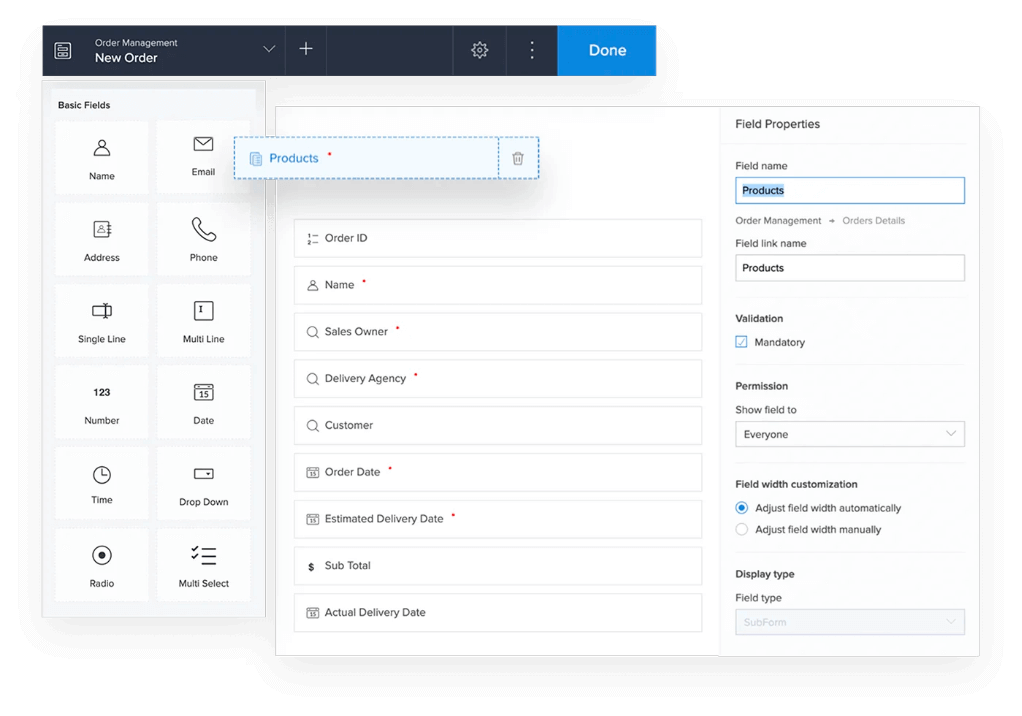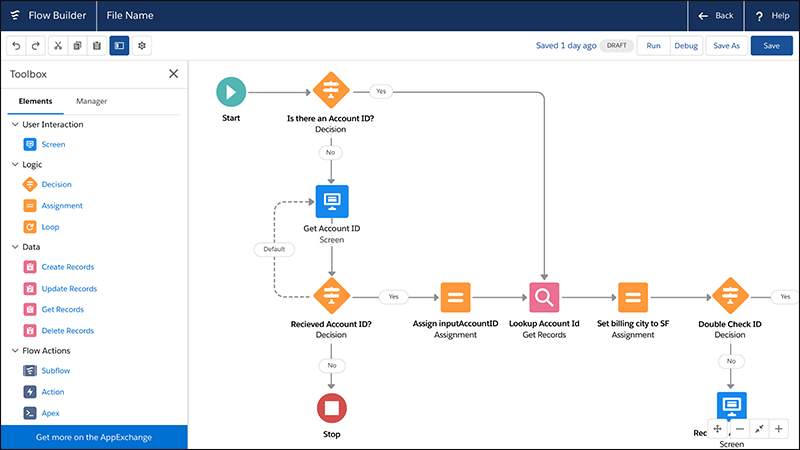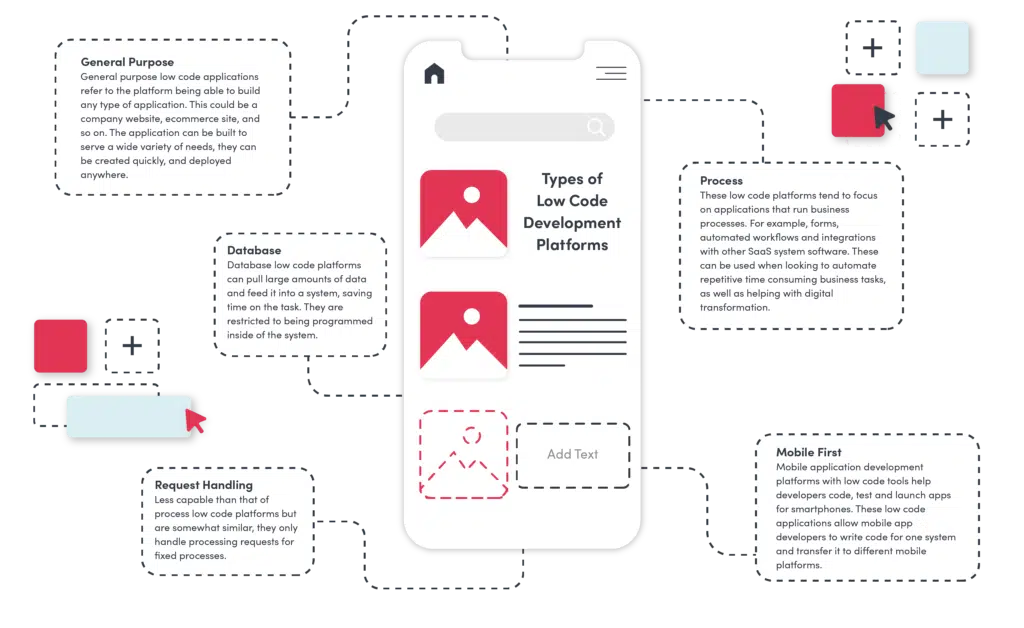New Info For Choosing Low-code platforms for application development
New Info For Choosing Low-code platforms for application development
Blog Article
App Development Using Low-Code Is More Efficient.
Visual Development Environment:
Drag-and-Drop Interfaces: Low-code platforms provide visual tools for designing applications. Developers can utilize drag-and-drop tools to build applications quickly without having to write a lot of code.
Pre-built Templates and Components: A lot of low-code platforms have pre-built templates and components, which allow developers to rapidly create and prototype applications without the need to begin from the beginning.
Reduced Coding requirements:
Automated Generated Code: Lowcode platforms create the code base on the visual models that developers have created. It reduces the need to manually code and accelerates development.
Reusable component: Developers are able to utilize the same components on various projects. This cuts down time spent on writing code and testing.
Collaboration streamlined:
Integrated Development Tools: Low-code platforms typically come with tools for version control testing, deployment, and testing that allow seamless collaboration between development teams.
Citizen Development (Citizen Development): Users and non-developers of business applications can take part in application development by using user-friendly interfaces. This reduces the bottleneck created by limited access to professional developers.
Rapid Iteration and Prototyping:
Fast Prototyping. Developers can create prototypes in a short time to validate their ideas as well as get feedback. This leads to a faster iteration cycle.
Easy Modifications: The visual nature of low-code development makes it easy to make changes and updates to applications. This speeds up the process of improving and refining applications based on feedback from users.
Pre-built Integrations:
API Integrations: Low code platforms usually come pre-built with connectors for popular APIs and services. This can reduce the time required to connect external systems.
Data Integration: Built-in software to integrate data simplify the process of connecting databases and other data sources, speeding up development.
The deployment of scaling:
One-Click-Deployment: A lot of Low-Code platforms provide one-click deployment options. This cuts down on the amount of time and effort required to deploy an application.
Cloud-Based Solutions: Cloud-based, low-code platforms can handle scaling and infrastructure management and allow developers to focus on the application's logic and function rather than the logistics of deployment.
The main advantage of low-code application development in terms of speed, is its ability to automate and simplify a variety of aspects of the process. This allows for faster delivery of applications, and faster adaptations to evolving needs. Read the most popular Low-code Platform for application development tips for more recommendations including multiplatform mobile app development, database in azure, application modernization, cross platform mobile app development, azure sql server, develop cross platform mobile app, software for app development, cross platform mobile development, push notifications, no code platforms and more.
Benefits Of Low-Code Application Development For Governance And Security
Low-code application design offers many advantages in terms of governance and security. Both are essential for making sure that apps remain compliant, secure and well-managed throughout their lifespan. Here are the key benefits: Centralized Governance:
Unified Manage Console: Lowcode-based platforms usually offer a management console that allows administrators to supervise and manage applications.
Role-Based Access Control (RBAC) The majority of these platforms offer robust role-based access control which allows administrators to set and enforce access policies. Only authorized users are able to modify or access certain elements of a program.
Compliance and Regulatory Adherence
Many low code platforms include built-in compliance features. They are designed to ensure that applications comply with industry standards (e.g. GDPR, HIPAA). They provide tools and templates to ensure that the applications are compliant with these regulations.
Audit Trails: Many companies integrate comprehensive logging and audit trail systems, which allow them to monitor changes make, track access and assure the compliance of internal and external rules and regulations.
Additional Security Measures
Data Encryption : Low-code platform usually provide data encryption built-in both in transit and at rest. This ensures that data sensitive information is secured.
Security Certifications - Many lowcode providers hold security certifications, such as ISO 27001 (or SOC2) which proves the compliance to the highest security standards. The customers can be confident that these providers adhere to these standards.
Automated security updates:
Regular security updates and patches Low-code platforms handle automatic security updates, patches and upgrades. The applications are thus protected from the latest threats without the intervention of developers manually.
Security Monitoring: Constant security monitoring tools can be included to provide real-time notifications as well as information about potential security problems.
Data Governance
Data Access Policies These platforms allow organizations to define and enforce their data access policy and ensure only authorized users are able to access information and that it's properly used.
Data Masking and Anonymization: The built-in tools to hide and anonymize data helps protect sensitive information in development and testing environments.
Consistent Application Management:
Development and Deployment pipelines: Lowcode platforms typically provide integrated development-and-deployment pipelines with security checks. They ensure security throughout the application's lifecycle.
Version Control: A unified version control system helps to control changes, allowing any changes that are made to an application to be monitored. If needed they can be reversed and the application's integrity maintained.
User Authentication and Authorization:
Single Sign-On: The support for SSO as well as other sophisticated authentication methods simplify the management of users and increases security.
Multi-Factor Authentication Most platforms have integrated support for multi-factor authentication. This adds an additional layer of security to the applications.
Monitoring of Policy Enforcement and Compliance:
Policy Templates: Low code platforms typically have templates for governance and security that enable organizations to quickly implement policies.
Compliance Monitoring Tools: These offer continuous monitoring and reports on compliance status. This helps to identify potential issues and tackle them in a timely manner.
Integrate with the existing security infrastructures:
Easy integration: Low-code systems can easily be integrated into the existing security tools and devices like firewalls, SIEM products (Security Information and Event Management), and identity management systems.
API Security: API features that protect data and maintain application integrity are built into the API.
Best Practices and Training
Good practices: Several platforms have guidelines for creating secure applications and provide best practices. This can help non-developers adhere to security standards.
Security Training Some low code providers offer security resources and training to users to educate them on how to create and maintain secure applications.
Overall, low-code application developers have a governance and a security advantage that allows them to build and manage applications in a controlled, regulated and secure way. These platforms provide the frameworks and tools required to safeguard sensitive data and enforce policies, while ensuring the regulatory compliance. Follow the most popular Legacy application modernization with Low-code tips for site advice including low code platforms, build a docker container, rapid application design, mobile development platforms, microsoft azure sql, cross platform app dev, build a docker container, develop mobile application, app modernization, app modernisation and more.
In Terms Of Support For Vendors And Community Support, Low-Code Application Development Offers Many Benefits.
Low-code development platforms have distinct advantages in terms of support for vendors as well as the community. They are essential for successful implementations, ongoing maintenance, and constant improvement. Here are a few of the benefits.
Comprehensive Technical Support:
Support Teams with Dedicated Support Many low-code platforms offer special support teams that are able to assist in technical problems, problem-solving and provide guidance. This will ensure that any problems are quickly addressed.
Certain vendors provide 24/7 support. This is especially helpful for multinational companies that have different time zones.
Training and Onboarding
Vendors offer structured learning programs such as webinars, tutorials, and certifications to assist users in becoming familiar with the system.
Customized Onboarding : Many vendors offer customized onboarding services that help new customers to implement the platform and customize it to meet their individual requirements.
Regular Updates and Enhancements
Continuous Improvement: Lowcode platform vendors usually issue regular updates that include new features, performance improvements as well as security patches. This helps to ensure that the platform remains current and secure.
Feedback Integration Vendors incorporate customer feedback into the development cycle to ensure that the platform is updated to adapt to changing requirements.
Comprehensive Documentation:
Detailled Documentation: Comprehensive and well-organized documentation is usually available that covers everything from the basics of use to advanced customization, which helps users to find solutions without assistance.
API References In-depth API documentation enables developers to create custom applications and integrate low-code platforms with other systems.
Consultancy and Professional Services
Expert Consulting: Vendors often offer consulting services to assist in the process of strategic planning architectural design, as well as complex implementations, ensuring that users are able to use the platform to its maximum potential.
Custom Development Services: A few providers offer custom development services to create specific integrations or features that are not available out-of-the-box.
Community Support for the Community
Active User Groups:
Forums and Discussion Panels Many Low-code platforms feature vibrant online communities, where users can ask questions, share solutions, and work with each other on best practices.
Local and virtual user groups, as well as Meetups, provide opportunities for users to exchange experiences, share their knowledge with others, and build relationships.
Knowledge Sharing & Collaboration:
Community-Contributed Resources: Users often share templates, modules, and extensions that they have developed, which can be reused or adapted by others, accelerating development and innovation.
Crowdsourced Solution Finding: The collective wisdom and experience of a group could be an excellent resource for solving complex issues.
Learning and Development
Community-Led Training: Several communities hold workshops, training sessions and webinars. These are usually led by experienced users who provide practical insights and more advanced methods.
Online Tutorials and Courses Community members frequently create and share online tutorials, courses, and guides on how-to, improving the educational resources available to all users.
Feedback and Influence
Product Feedback: Several community forums offer channels to give feedback to the vendors. This can influence the development of new features and enhancements.
Beta Testing Programs: Members of active communities may have the opportunity to participate in beta testing programs, giving the opportunity to test new features as well as a say in shaping the platform's evolution.
Recognition and Support:
Community Recognition Programs: A lot of vendors have recognition programs that acknowledge the contributions of active community members for example, MVP (Most Valuable Professional) programs.
Peer Support: Members of the community often offer peer support by sharing their expertise and offering advice for users who are not as skilled. This fosters a collaborative friendly and supportive environment.
Overall the combination of strong vendor support and a vibrant and engaged community creates an entire support network for development of low-code applications. This ensures that users are able to access the resources as well as the expertise and collaboration opportunities to create, deploy, and maintain their apps which ultimately improves the efficiency and effectiveness of their applications.